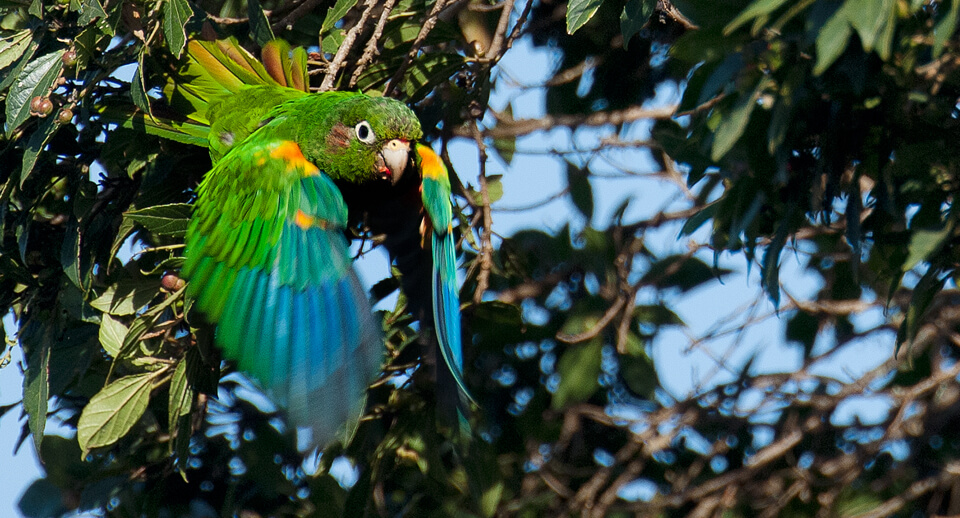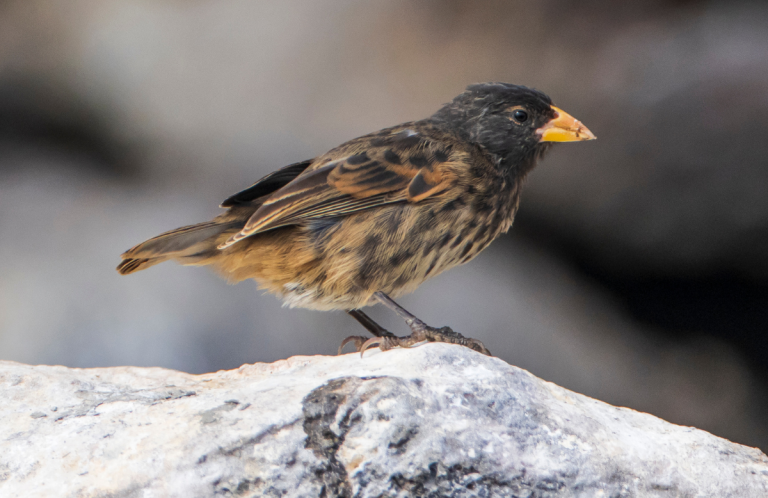 These small green parakeets of northern Colombia typically travel in small, noisy flocks, flying swiftly at or below canopy level. Once settled in a tree they tend to be silent (especially if aware of danger) and difficult to spot.
These small green parakeets of northern Colombia typically travel in small, noisy flocks, flying swiftly at or below canopy level. Once settled in a tree they tend to be silent (especially if aware of danger) and difficult to spot.
Santa Marta Parakeets nest in natural tree cavities but will use artificial nest boxes. Although the species is non-migratory, the birds move seasonally in response to local environmental conditions and food availability. Like most of its brethren, including the rare El Oro Parakeet, the Santa Marta Parakeet feeds on a variety of vegetation, nectar, fruit, and seeds.
Threats to Santa Marta Parakeet
The chief threat to these parakeets is habitat loss due to logging, agricultural development, cattle raising, and human settlement. The expansion of non-native pine and eucalyptus plantations also threatens this bird's native habitat. Only 15 percent of the original vegetation in the Sierra Nevada de Santa Marta remains
ABC and its Colombian partner Fundación ProAves have conserved important tracts of the Santa Marta Mountains beginning in 2006, when 1,600 acres of key parakeet habitat beyond the nearby national park were protected and named the El Dorado Nature Reserve. Additional land acquisitions in 2010 and 2012 have enlarged the reserve to its current 2,250 acres. (You can visit!)
Work to eradicate invasive pines is ongoing; thousands of pine trees and saplings have been removed and replaced by native palm trees appropriate to the Santa Marta Parakeet's foraging and nesting requirements. Artificial nest boxes have been used in the reserve since 2006 to help boost the parakeet's populations.
Sign up for ABC's eNews to learn how you can help protect birds
The Special Santa Marta Mountains
The Sierra Nevada de Santa Marta mountain range contains the single highest concentration of endemic birds found on earth, including not only the parakeet but also the Santa Marta Antpitta, Santa Marta Mountain-Tanager, Santa Marta Sabrewing, Santa Marta Bush-Tyrant, as well as many other birds. The area also holds exceptional levels of diversity and high levels of endemism for plants, amphibians, and butterflies. It was declared an Alliance for Zero Extinction site in 2005.

Santa Marta Parakeet by Greg Homel, Natural Elements Productions
“The most important stronghold for this rare parakeet is found along the steep San Lorenzo ridge that lies on the western edge of the Santa Marta mountain range,” says Benjamin Skolnik, former International Conservation Officer at ABC. “Strolling along the ridge, visitors can spot the small, bright green parakeets quietly feeding and preening in stands of palms which are now protected as part of El Dorado Reserve.”
Support for Santa Marta
ABC and ProAves started a Women for Conservation program at El Dorado in 2008. The program provides women living in the reserve's buffer zones with economic opportunities from the production and sale of crafts in return for agreeing to protect the reserve and its natural resources
You can support the Santa Marta Parakeet and conservation at El Dorado when you go birding in Colombia. In fact, this reserve has become a model for self-sustaining ecotourism lodges; visitor income covers the operation expenses.
Donate to support ABC's conservation mission!




















































